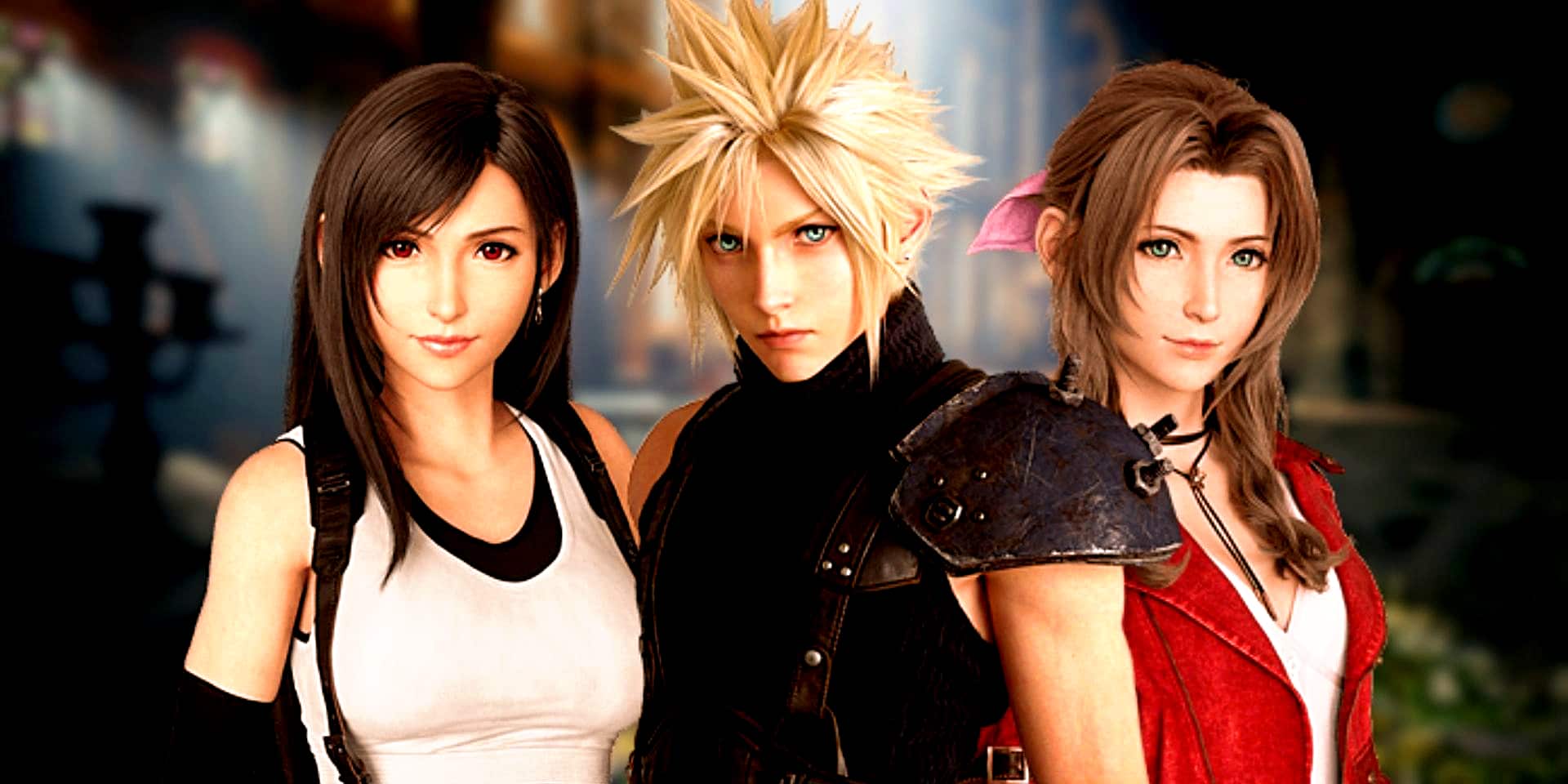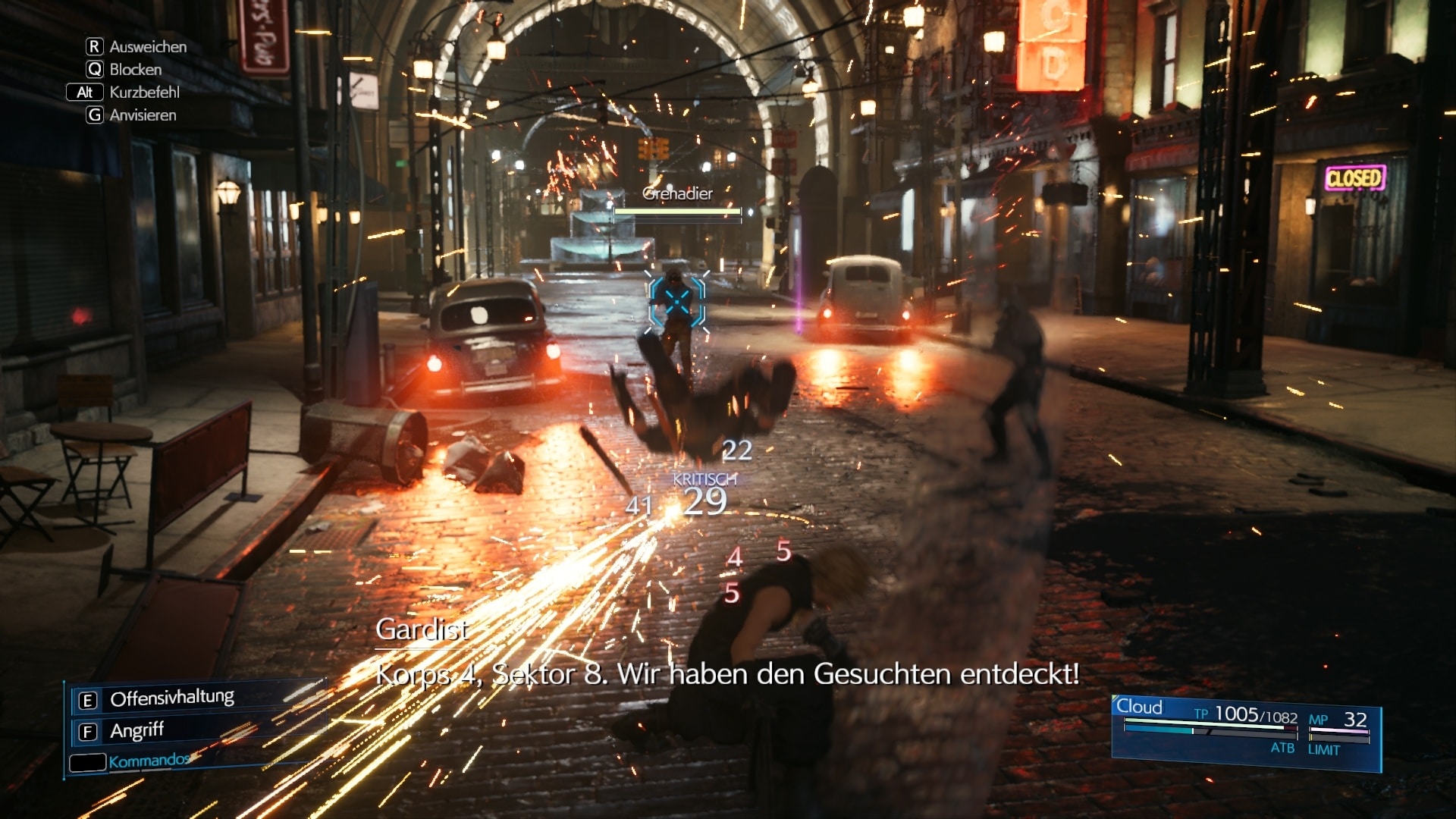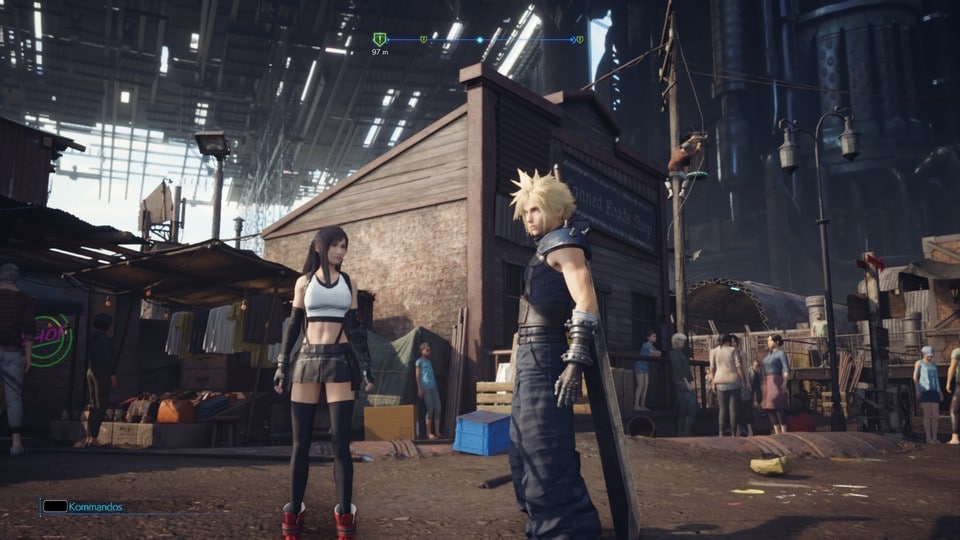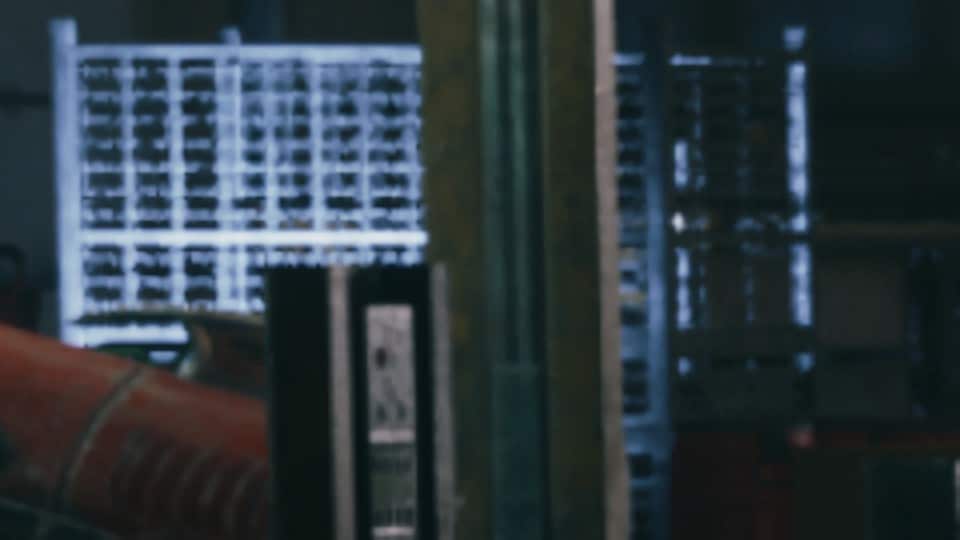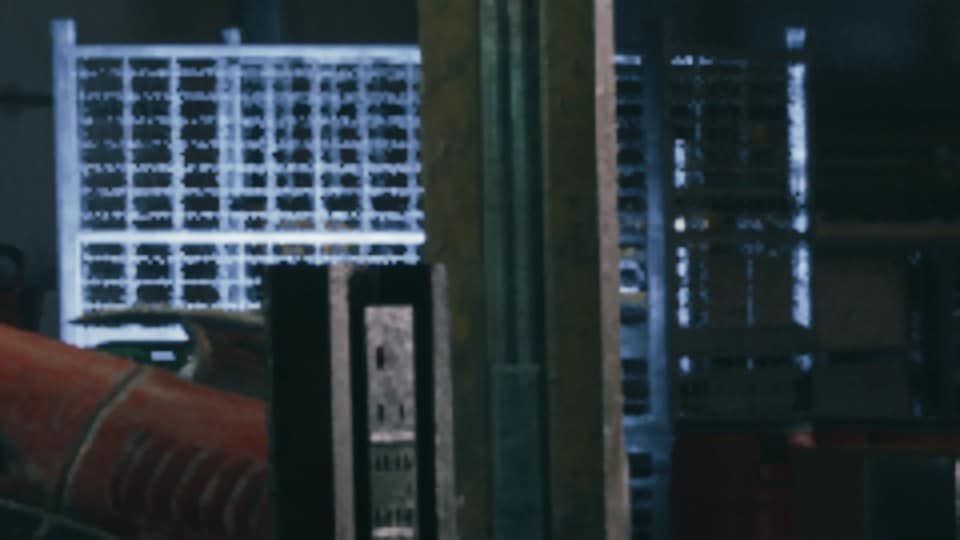The remake of the cult role-playing game Final Fantasy 7 is also one of the top-class remakes on the PC. As with the PS5 version, the additional Yuffie episode is included, but two-thirds of the original game is missing.
Final Fantasy 7 is the best-known instalment in the tradition-steeped role-playing series and perhaps one of the most influential video games ever. After all, the original in 1997 – at the time exclusively for the first PlayStation – flaunted ingenious render sequences, huge scope and gameplay innovations.
But the sci-fi epic is also very old now. That’s why Final Fantasy 7 Remake Intergrade, a completely modernised version of the 1997 rebel saga, is now also available for the PC in the Epic Games Store (PS5 owners have been playing since June 2021), in the Intergrade edition even with a new episode about ninja princess Yuffie on top.
Sounds great? Yes, Square Enix has brought the PlayStation dinosaur into this millennium as gently as it has bombastically. The remake leaves the original turn-based combat system behind in parts, instead Midgar is now often hit in real time. But the new battles are one of the great strengths of the remake!
However, you have to know what you’re getting into. Because the remake stops just when the original really gets going. Square Enix will only deliver the second and third thirds of its remake vision in the coming years. A decision whose pros and cons have been controversially discussed since the console release, but which does not make the PC version a bad role-playing game. On the contrary!
Table of Contents
Rebels with depth
Instead of quickly reeling off the destruction of the first Shinra reactor and the return of the Avalanche rebels to the slums at the beginning of the game like the original, the first episode of the Final Fantasy 7 remake focuses on the Midgar story and tells it in more detail.
Oh, so you’ve forgotten what Avalanche, Shinra or Midgar even is? Don’t worry, here’s a little refresher: Avalanche are a group of resisters who rebel against Shinra Corp in the retrofuturistic metropolis of Midgar (and beyond). The electrical corporation taps into the planet’s life stream to extract the mako it contains. The mysterious substance is the most important pillar of the energy supply, but Gaia (usually called “the planet”) is in its last breaths. In that sense, Avalanche are eco-terrorists.
The Avalanche Saga
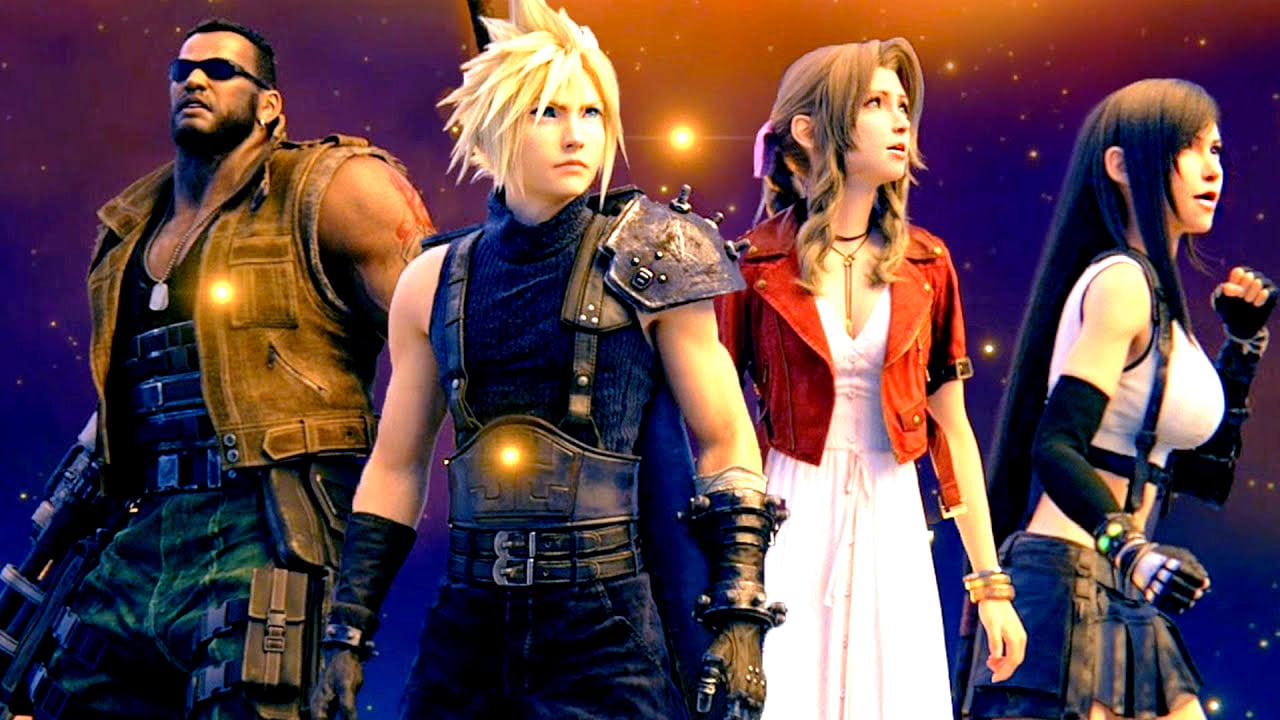
Final Fantasy 7 was released in early 1997, when 3D graphics were still in their infancy. From today’s perspective, the role-playing game combines coarse polygons with fantastic, CD-running cutscenes. In terms of gameplay, it boasts an interesting, pseudo-round-based battle system as well as an exciting plot revolving around a rebel group. The team around director Yoshinori Kitase won numerous Game of the Year awards and fantastic press reviews – the full score was awarded more than 40 times.
In 2002, our colleagues at GameSpot voted Final Fantasy 7 the second most influential game of all time, and three years later Square Enix released Final Fantasy 7: Advent Children, an animated film based on the PlayStation hit. Incidentally, the fan favourite was delivered on what was then a lavish three CDs because of the extensive video material. All discs contained almost identical game data of 250 megabytes each, the remaining 400 megabytes were taken up by the lush render scenes.
The hero of Final Fantasy 7, a spiky-haired ex-SOLDAT named Cloud, is only joining Avalanche for the money for now. And yes, SOLDAT is capitalised here on purpose, that’s the name of the Shinra corporation’s corporate fighting force. The fact that there is an emotional side under Cloud’s granite hard shell is shown much better in the remake through additional scenes than in the original version.
Gradually, we get to know all the main characters better, learn more about the past of the flower girl Aerith, and much more about other combatants like Biggs, Jessie and especially Yuffie. Her story comprises two chapters in which the Hand Edge Princess steals the “Ultimate Materia” from the Shinra headquarters in Midgar. She receives help from a new character, Sonon, a staff fighter from Wutai.
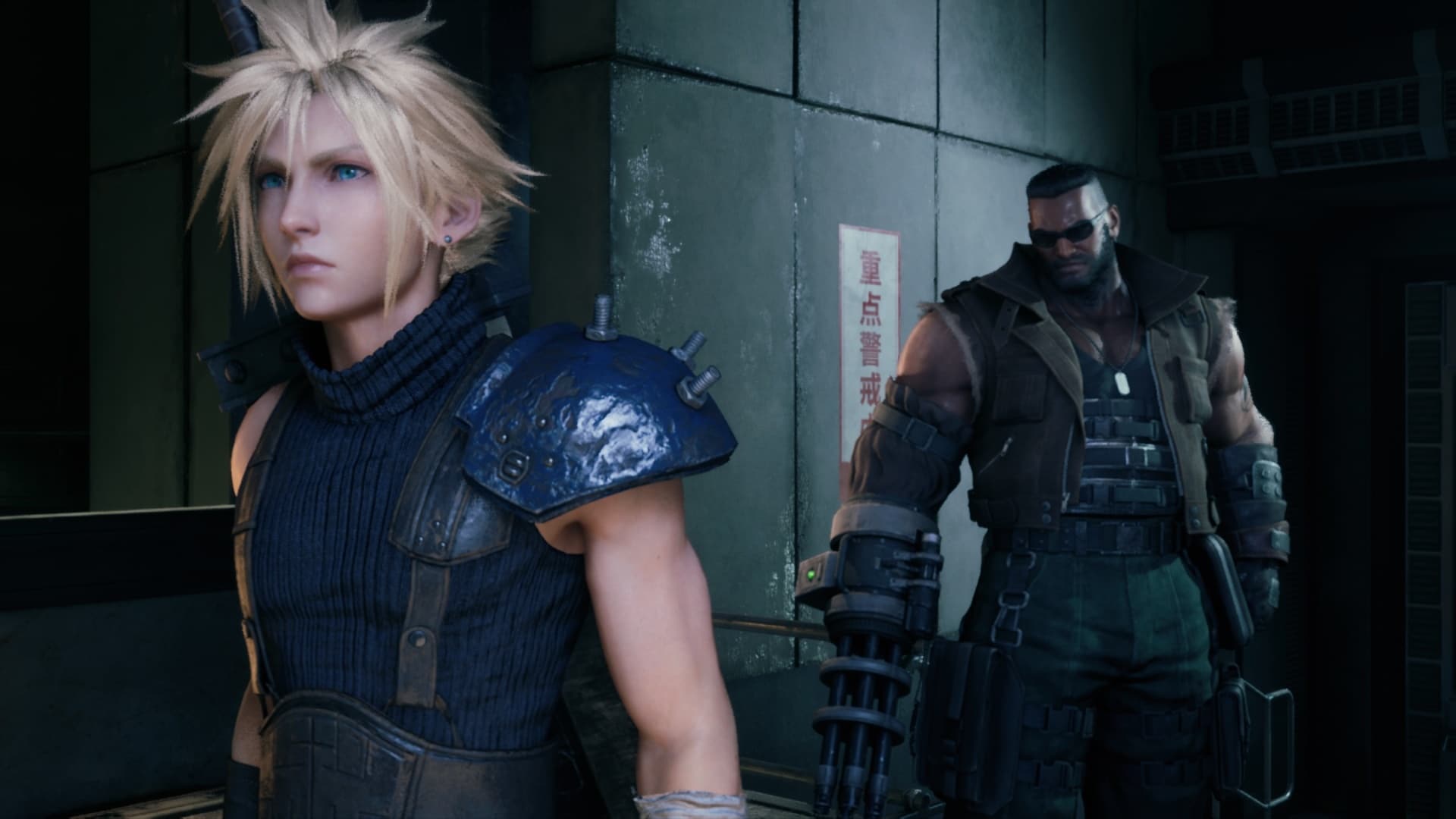
Many question marks even for story connoisseurs
Because we take the rebel clan into our hearts faster (and even more) than before, thanks to numerous new scenes, the cut hurts all the more after about 40 hours of gameplay. Final Fantasy 7 Intergrade ends with the escape of the Avalanche members from Midgar – the original really gets going at this point. On the other hand, the deeper and more detailed characterisation, including elaborately staged cutscenes, creates a much closer bond with the characters than in the original.
The other story additions, on the other hand, are a matter of taste. The remake takes many liberties, tells some things completely differently and adds completely new things. On the one hand, this makes the story interesting and surprising even for connoisseurs of the original, on the other hand, it makes it far less stringent. Final Fantasy 7 Remake is only too happy to lose itself in mysterious hints, but only resolves them very late or not at all – thanks to the forced open ending.
No paradise for globetrotters
When we roam the new old landscapes of Gaia with previous knowledge (which we do in the remake in the third-person perspective), our jaws drop more often than not because Midgar and its surroundings have been wonderfully reinterpreted. Although they still looked rather pixelated when FF7 was first released at the end of the 90s, we immediately recognise key locations such as the bar (“Seventh Heaven”), the “Pizza” (Upper Town) or the reactors…
In addition, there are new locations, such as the dark street canyons of the steampunk capital, where we fight battles against storm guards. Essentially, however, we traverse sandy, barren junkyards, dreary green sewers with neon lighting. Only rarely do we find ourselves in more graceful places such as a wonderfully detailed, traditionally Japanese noble dwelling.
In Midgar there are now a good 30 side missions, the quality of which rarely goes beyond the famous role-playing cliché of the rat infestation in the cellar. Mostly they are limited to taking care of smaller boss fights at certain locations. Otherwise, we test an experimental Shinra device while thrashing, search for lost three-cheese highs, or complete quicktime climbs while panting – all of which is hardly heroic.
Minigames
In total, Final Fantasy 7 Remake Intergrade contains six minigames. Many of them are either familiar from the PlayStation original or strongly reminiscent of earlier diversions.
Darts: The darts mini-game works according to the usual 301 rule, which means that the points scored are not added but subtracted from the starting number 301. The winner is the first person to reach zero points. In the mini-game, the darts are brought to the target by taming an idiosyncratic crosshair.
- Climbing Duel: Here, Tifa has to complete chin-up after chin-up, which is done by entering predefined key sequences. The instructions run across the screen to the rhythm of the music.
- Knee Bend Duel: Basically works just like the pull-up duel, but here it’s Cloud facing an opponent in the man-on-man fitness centre.
- Motorcycle Race: During a long motorbike ride through dimly lit tunnels and canals, Cloud must knock Shinra soldiers off their stoves while protecting fellow rebels.
- Dance Competition: At the Honeybee Inn, Cloud puts on a dashing display. Once again, rhythmic keystrokes are the order of the day, accompanied by a proper dance choreography – though not as complex as in the dance games of the Yakuza series, for example.
- Whack-a-Box: Here Cloud (ideally as if out of his mind) hits boxes with his sword, because the high score is at stake. Each crate smashed increases his ATB meter so that special abilities can be used
The game world, shrunk as a result of the story curtailment, has three locations to offer us free movement, namely the slums of three sectors. Nevertheless, the feet of the Avalanche rebels not only trudge through filthy sand and electronic waste, once there is also a classically staged battle in the upper city. But the levels are all as straightforward as the story, so that although there is often a lot to see, there is little to discover apart from small treasure chests.
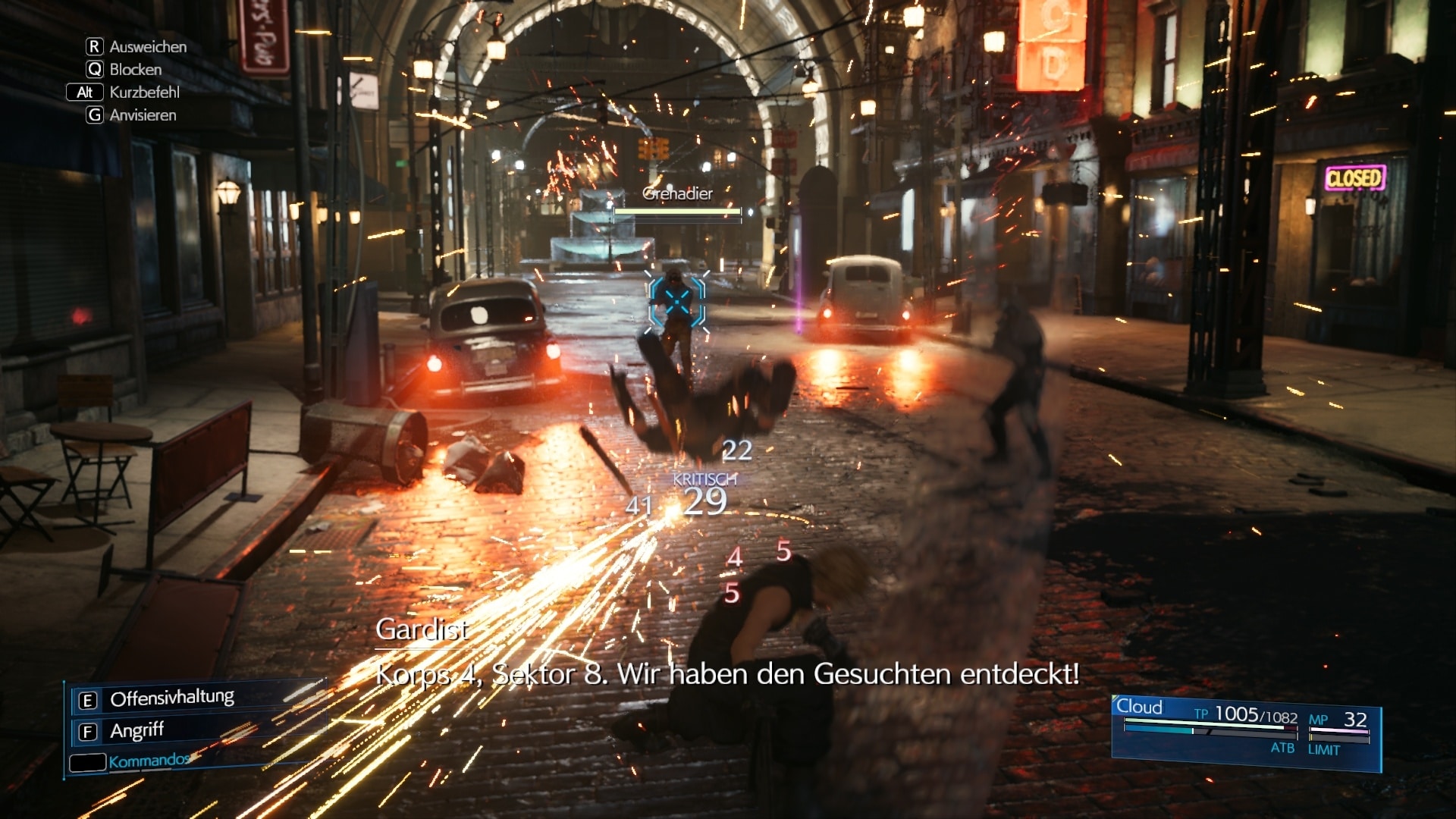
Whoever takes all the sidequests can easily spend 40 hours with the Final Fantasy 7 Remake, but then also spends a lot of time on boring traipsing and even more boring occupational therapy. The first third of the Final Fantasy 7 Remake is not the role-playing game tidbit that many feared, but it also feels unnecessarily stretched out.
Fat battles with tactics and action
To equip ourselves for the sometimes challenging battles against the wide range of enemies – including (motorised) storm guards with machine guns and shields, acrobatically gifted high-tech combatants and paralysing “omnivores” – we not only buy equipment or healing potions in shops, but also modify the weapons of the Avalanche party at any time.
To do this, we freely distribute weapon points and thus increase the magical attack of Cloud’s sword or convert ranged fighter Barret into a tank. In addition, we can use the familiar materia balls (the FF7 equivalent of runes) in equipment slots, level them up and combine them with passive materia.
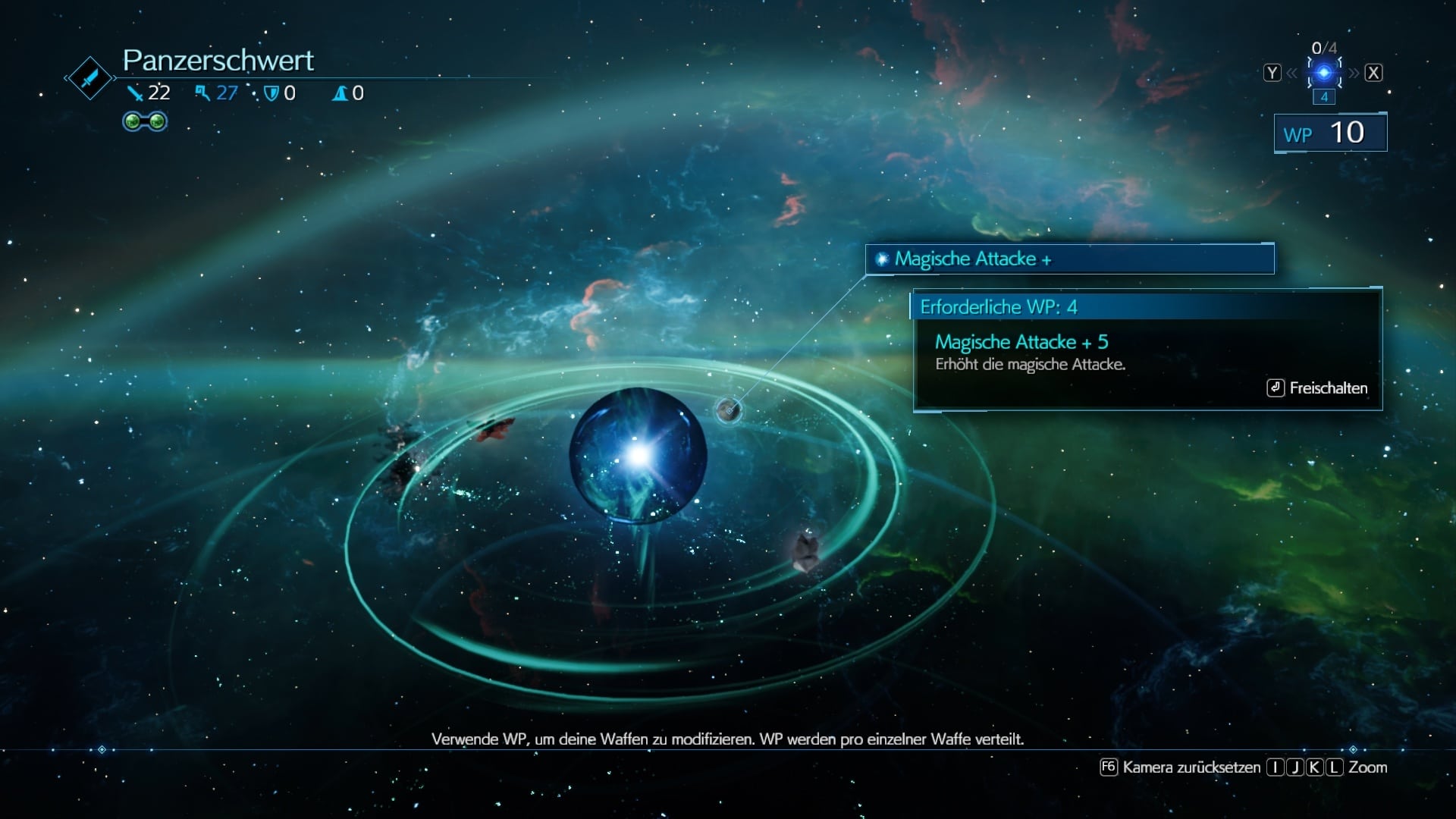
The pseudo turn-based ATB (Active Time Battle) combat system of the original is only partially left. We still need ATB points to perform special abilities, but this time we fight for them in real time. Only when the ATB bar is full enough are we allowed to activate the tactics mode, which almost stops time and enables the use of magic and powerful fighting techniques. This is almost reminiscent of the round fights of the original.
The limit attacks including the corresponding filling bar as well as summons (Bahamuth, Shiva) are available; in addition, we can give a combat command to fellow combatants or switch directly to them. This sounds more complicated than it is, but in practice the battles are a lot of fun and a successful innovation.
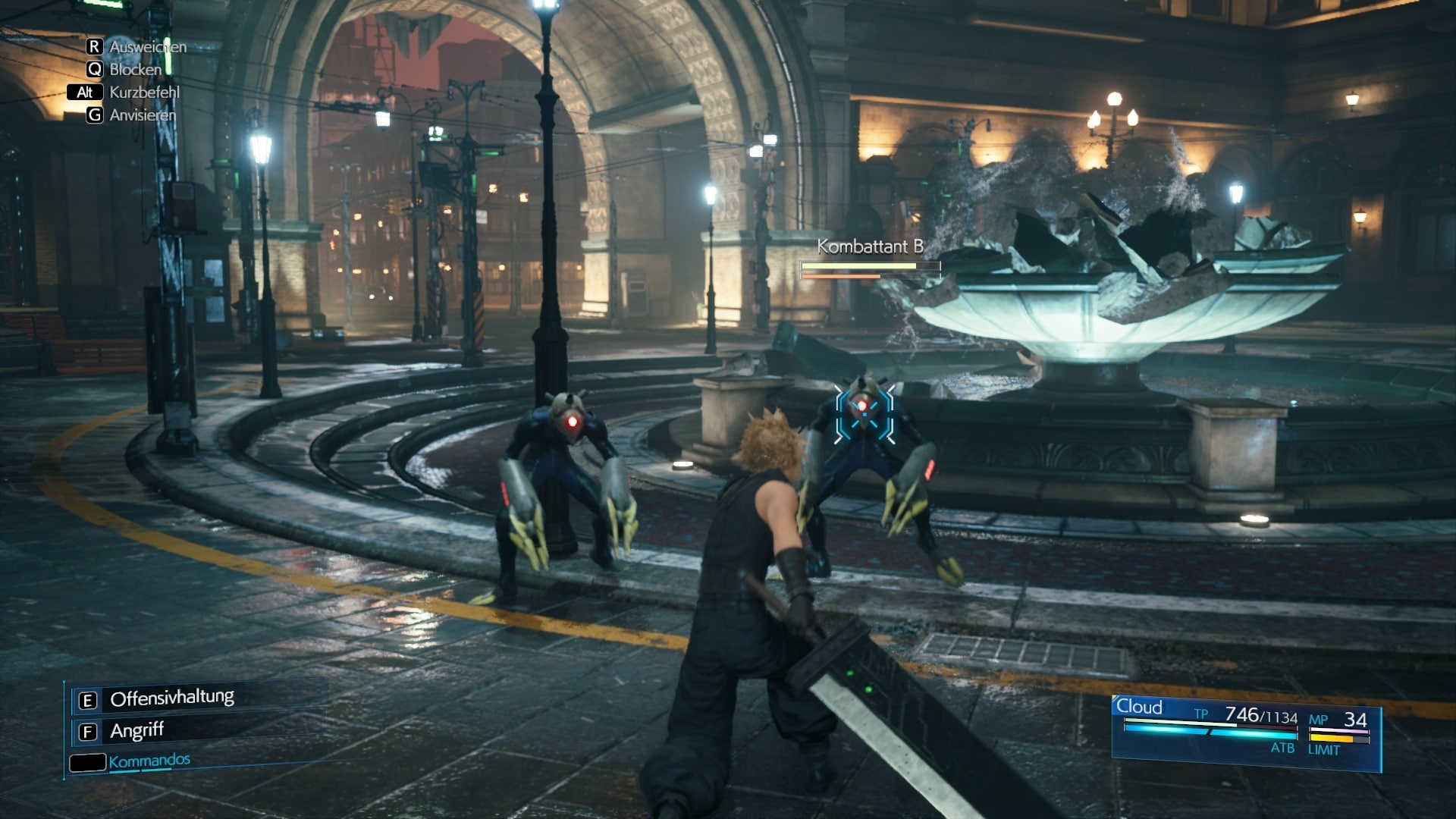
The battles fire off brute storms of effects (especially in the impressive boss fights) and are a benchmark for other action role-playing games thanks to the 1A controllability via keyboard and mouse. But why is the “classic mode” based on fast real-time car fights that are additionally fed with commands? Here we would rather have expected the classic cooldown round system of the original.
Miserably Good
We took a closer look at the PC version of Final Fantasy 7 Remake Intergrade, also with a view to the technical implementation. The system requirements are not particularly high anyway: Even for WQHD resolution, a Geforce GTX 1080 or a Radeon RX 5700 should suffice alongside a Core i7 3770 or a Ryzen 3 3100.
We can confirm this. On our test system with RX 5700, we achieved between 105 and 115 frames per second in WQHD at maximum details. Occasionally, we experienced short frame rate drops to around 90 FPS in the form of noticeable judder. Even in 4K resolution, the remake of the classic role-playing game runs smoothly on our RX 5700 with a good 70 FPS.
However, the game makes use of dynamic resolution scaling. This means that the resolution is adapted to the gameplay in order to achieve or guarantee a certain FPS target (30, 60, 90 or 120 FPS). This is hardly noticeable when playing games; only when enlarged do differences become apparent, as the following comparative images show (image detail recorded with the RX 5700 in 4K and enlarged by 800 percent to Full HD):
By the way, the FPS target cannot be switched off via the options menu, and we are currently not aware of a workaround either.
A great prelude, but just a prelude
If you disregard the successful enrichment of the time-honoured ATB combat system with action-heavy real-time elements, a new interpretation of Final Fantasy 7 could hardly have turned out more authentic. The clunky, almost ugly characters and environments of yesteryear have become believable heroes with depth, who rebel under the shadows of sometimes awe-inspiring buildings in a technically highly impressive manner.
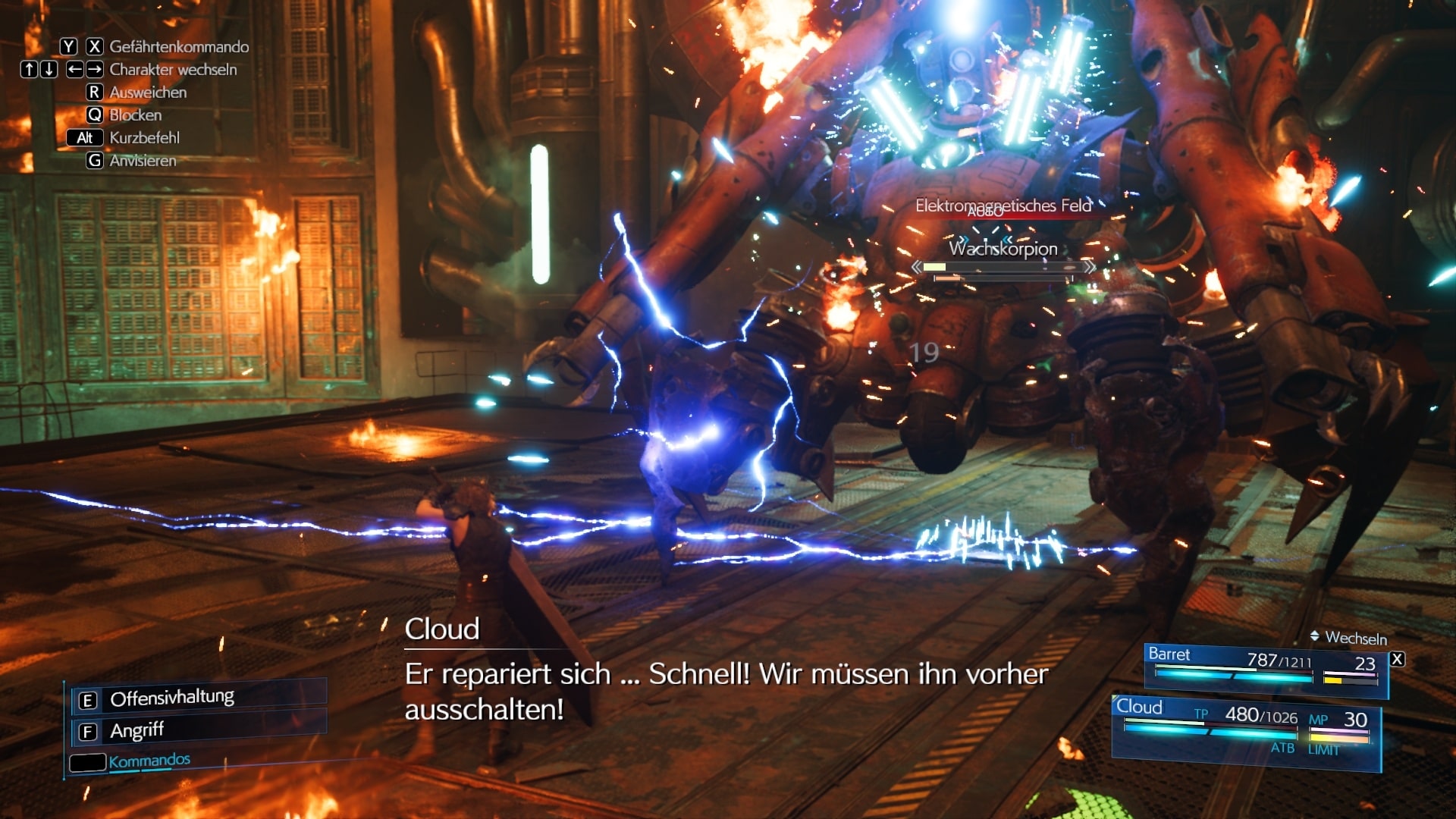
But they don’t even do that for a third as long compared to the original – with the insurgents’ escape from Midgar, the final curtain actually falls here. The big story twists, the trips with the airship, the world map and much more are missing. That doesn’t make the Final Fantasy 7 remake a bad game. On the contrary, hardly any other remake puts so much effort into the reinterpretation of a legendary story. But this effort also has the price that both connoisseurs of the original and FF7 newcomers will be hungry for more after the end credits. For better or for worse.
Editor’s Verdict
Final Fantasy 7 Remake Intergrade is a lot closer to the original than I originally thought. The extended opener looked like a completely different game at first, but then it came along, the brilliant 2021 variant of the 1997 PlayStation intro. Square Enix really delivered a very authentic remake, from the “real” adaptations of the old low-poly characters to the great orchestration of the original soundtrack to the almost primal level design.
As a nostalgic player, I am disappointed by the quasi-discontinuation of the pseudo-round-based ATB combat system, even though the new system works really well. A little consolation might have come from a more interesting game world, but it’s mostly only two or three tank swords wide and makes me run into a (albeit pretty) render scene every so often. This linear design is of course close to the original, but from today’s perspective it seems decently old-fashioned to me.

